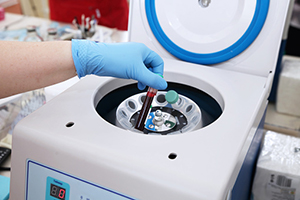In a single-institution retrospective study reported in JCO Oncology Practice, Lynch et al found that routine laboratory surveillance testing had limited value in detecting relapse in patients with classical Hodgkin lymphoma in first remission.
Study Details
The study involved 235 patients at Stanford University Medical Center with newly diagnosed classical Hodgkin lymphoma treated with the Stanford V regimen from 1998 to 2014. Patients had to have been in complete remission for at least 3 months. Laboratory tests showing grade ≥ 2 abnormalities were considered abnormal results. The primary objective of the analysis was to determine the ability of routine laboratory surveillance findings to identify relapse in the first 3 years after end of treatment.

Photo credit: Getty
Key Findings
Among the 235 patients, 24 (10.2%) experienced relapse.
In the 3 years after end of therapy, patients had a total of 1,661 surveillance blood draws, with a mean number of blood draws per patient of 7.1 (range = 1–13). Blood draws included 4,684 individual laboratory tests, including 1,609 complete blood counts, 1,578 metabolic panels, and 1,497 erythrocyte sedimentation rates.
Overall, absolute lymphocyte count was abnormal in 25% of tests and erythrocyte sedimentation rate was abnormal in 9.6% of tests; all other components of testing were abnormal in 0.1% to 3.6% of tests.
In total, 41 patients underwent biopsy for suspected relapse, with biopsy confirming relapse in 23; the remaining patients received treatment for relapse on the basis of imaging findings in an area that could not be readily biopsied. Surveillance imaging prompted biopsy in 27 (66%) of the 41 patients undergoing biopsy.
No patient who underwent biopsy or experienced relapse had additional work-up, including biopsy, prompted by an abnormal laboratory value.
Overall, surveillance laboratory testing had a sensitivity of 72.7% and specificity of 22.6% for any test detecting relapse within 3 years of the end of treatment, yielding a positive predictive value of 8.9% and a negative predictive value of 88.9%. Exclusion of absolute lymphocyte count from analysis yielded a positive predictive value of 10.8%. Inclusion of only erythrocyte sedimentation rate in analysis yielded a positive predictive value of 16.4%.
The investigators concluded, “Our study found limited clinically meaningful utility for routine surveillance laboratory testing in detecting relapse in patients with complete remission at end of treatment. Our results warrant consideration of modifications to current practice guidelines.”
Ryan C. Lynch, MD, of the University of Washington, Seattle and Stanford University, is the corresponding author for the JCO Oncology Practice article.
Disclosure: The study was funded by the National Cancer Institute and a Stanford National Institutes of Health/National Center for Research Resources Clinical and Translational Science Award. For full disclosures of the study authors, visit ascopubs.org.

